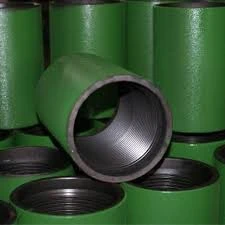- Afrikaans
- Albanian
- Amharic
- Arabic
- Armenian
- Azerbaijani
- Basque
- Belarusian
- Bengali
- Bosnian
- Bulgarian
- Catalan
- Cebuano
- Corsican
- Croatian
- Czech
- Danish
- Dutch
- English
- Esperanto
- Estonian
- Finnish
- French
- Frisian
- Galician
- Georgian
- German
- Greek
- Gujarati
- Haitian Creole
- hausa
- hawaiian
- Hebrew
- Hindi
- Miao
- Hungarian
- Icelandic
- igbo
- Indonesian
- irish
- Italian
- Japanese
- Javanese
- Kannada
- kazakh
- Khmer
- Rwandese
- Korean
- Kurdish
- Kyrgyz
- Lao
- Latin
- Latvian
- Lithuanian
- Luxembourgish
- Macedonian
- Malgashi
- Malay
- Malayalam
- Maltese
- Maori
- Marathi
- Mongolian
- Myanmar
- Nepali
- Norwegian
- Norwegian
- Occitan
- Pashto
- Persian
- Polish
- Portuguese
- Punjabi
- Romanian
- Russian
- Samoan
- Scottish Gaelic
- Serbian
- Sesotho
- Shona
- Sindhi
- Sinhala
- Slovak
- Slovenian
- Somali
- Spanish
- Sundanese
- Swahili
- Swedish
- Tagalog
- Tajik
- Tamil
- Tatar
- Telugu
- Thai
- Turkish
- Turkmen
- Ukrainian
- Urdu
- Uighur
- Uzbek
- Vietnamese
- Welsh
- Bantu
- Yiddish
- Yoruba
- Zulu
metric pipe couplings
Understanding Metric Pipe Couplings Types, Applications, and Benefits
Metric pipe couplings are essential components used in various piping systems, playing a crucial role in fluid and gas transfer across industries. As piping systems grow increasingly complex, a thorough understanding of these couplings is fundamental for engineers, technicians, and anyone involved in piping installation or maintenance. This article delves into the different types of metric pipe couplings, their applications, and the advantages they provide.
What are Metric Pipe Couplings?
Metric pipe couplings are fittings designed to connect two or more pipes securely. They come in various sizes, shapes, and materials, allowing for a wide range of applications. Unlike their imperial counterparts, metric couplings conform to the metric measurement system, facilitating compatibility with pipes measured in millimeters. This aspect is particularly beneficial in regions that predominantly use the metric system, ensuring seamless integration with local piping standards.
Types of Metric Pipe Couplings
1. Screw Couplings These are among the most common types of metric couplings. They use threads to create a tight seal between pipes, making them suitable for both permanent and temporary connections. Screw couplings can accommodate slight misalignments, making installation straightforward.
2. Compression Couplings These couplings utilize a compression mechanism that tightens around the pipe fitting. They provide excellent sealing capabilities, making them ideal for applications involving liquids and gases under pressure. Compression couplings are popular in plumbing and HVAC systems.
3. Flanged Couplings Flanged couplings consist of two flanges that are bolted together, creating a robust connection. They are often used in larger piping systems where high-strength connections are required. Such couplings facilitate easy disassembly and maintenance, a significant advantage in industrial applications.
4. Welded Couplings These are permanently fixed couplings, achieved by welding the coupling directly to the pipe. Welded couplings are highly durable and offer a leak-proof seal, making them suitable for high-pressure applications, including oil and gas pipelines.
5. Quick Connect Couplings Designed for clean, easy, and quick disconnection, these couplings are often used in scenarios where equipment needs to be frequently connected or disconnected. Quick connect couplings are particularly prominent in hydraulic and pneumatic systems.
Applications of Metric Pipe Couplings
Metric pipe couplings are utilized across numerous sectors due to their versatility and reliability. Common applications include
metric pipe couplings

- Plumbing In residential and commercial buildings, metric couplings facilitate water supply and drainage systems, ensuring proper flow management. - HVAC Systems Couplings connect various sections of heating, ventilation, and air conditioning systems, contributing to efficient climate control.
- Industrial Manufacturing In factories, metric couplings link pipes in process systems, carrying fluids, chemicals, and gases necessary for production.
- Oil and Gas Couplings are vital in connecting pipelines that transport crude oil and natural gas, playing a pivotal role in energy distribution.
- Automotive and Aerospace Metric couplings are used in fuel and hydraulic lines, ensuring secure connections that maintain system integrity under dynamic conditions
.Benefits of Metric Pipe Couplings
1. Standardization Using metric couplings allows for consistency in system design and maintenance, particularly in areas where metric measurements are the norm.
2. Ease of Use Many metric couplings are designed for quick installation and disassembly, reducing downtime during maintenance.
3. Versatility With various types of couplings available, engineers can choose the most appropriate type for specific applications, ensuring optimal system performance.
4. Durability High-quality metric couplings are made from robust materials, providing longevity and resistance to corrosion, which is essential in industrial applications.
5. Safety Properly installed metric couplings significantly reduce the risk of leaks, contributing to safer working environments, particularly in hazardous industries.
Conclusion
Metric pipe couplings are fundamental components in modern piping systems, offering versatility, ease of use, and safety across various applications. Understanding the different types of couplings and their respective advantages allows professionals to select the best options for their specific needs, ultimately ensuring efficient and effective fluid and gas transfer in their systems. As industries continue to evolve, the importance and applications of metric pipe couplings will remain vital in maintaining infrastructure integrity and efficiency.
-
Tubing coupling plays a significant role in the chemical industryNewsApr.03,2025
-
The Importance of Tubing Crossover in Various Industrial FieldsNewsApr.03,2025
-
The characteristics and important role of Tubing Pup JointNewsApr.03,2025
-
Characteristics and functions of Pup jointNewsApr.03,2025
-
Characteristics and Functions of Pup Joint PipeNewsApr.03,2025
-
Application of Coupling Casing in Various ScenariosNewsApr.03,2025







